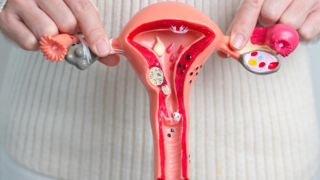In this article:
Sometimes, your baby may go through periods of rapid change called growth spurts, where they seem to shoot up in size or gain weight in just a few days. These spurts can bring changes in behaviour, too. Knowing what to expect can help you feel more prepared and less worried when it happens.
What Are Baby Growth Spurts?
A baby's growth spurt is a short period when your baby experiences rapid physical growth, gaining weight and length more quickly than usual. These bursts of growth are a normal part of your baby’s development as their bones, muscles, and fat tissues form to support their growing body. During these times, you might notice your baby feeding more often or for longer to fuel this rapid development. Growth spurts are different from developmental milestones, which focus on skills like thinking, moving, or socialising. Instead, growth spurts are all about physical changes that happen in a short timeframe, such as increases in height and weight.
When Do Growth Spurts Happen?
Every baby grows at their own pace, but there are common times when growth spurts are likely to occur. These periods vary depending on your child’s age and stage of development. Take a look at the breakdown of when you can expect growth spurts:Newborns (0-12 months)
Babies grow incredibly fast in their first year, adding about 25 centimetres in length and tripling their birth weight. Growth spurts often happen at:- 7 to 10 days as breastfeeding parents establish their milk supply and babies regain birth weight.
- 3 to 6 weeks, a time when babies may experience another rapid growth phase.
- 3 months, 6 months, and 9 months. Although the exact timing can vary.
Toddlers (1-5 years)
Growth slows and becomes steadier after the first year. Toddlers typically double their birth height by age five, but dramatic growth spurts are less common.Adolescents (puberty)
The next major growth spurt happens during puberty, with girls experiencing it between the ages of 9 to 15 and boys between 12 to 17. During this time, children may grow 9 to 10 centimetres in height annually.Keep in mind that every child is unique, and some may have less noticeable spurts or grow at slightly different times.
Signs of Newborn Growth Spurts
Growth spurts can bring noticeable changes in your baby’s behaviour and physical appearance. Knowing what to look for can help you recognise when your baby is going through one. These are the key signs:Increased hunger: Your baby may suddenly seem extremely hungry, wanting to feed more often or for longer periods. Breastfed babies might nurse for up to 30 minutes per session. If your baby is formula-fed, they might need a little more milk at each feeding.
- Changes in sleep patterns: Some babies sleep more during growth spurts and need extra rest to support their growing bodies. Others may wake more often at night due to hunger or become restless, leading to sleep regression.
- Fussiness or irritability: Growth spurts can make your baby cranky or clingy, possibly due to tiredness, hunger, or the demands of rapid growth. This fussiness is temporary and not a sign of pain.
- Physical changes: The most obvious sign is a rapid increase in weight or length. You might notice your baby’s clothes or nappies suddenly feel tight.
- Breastfeeding parents’ hunger: If you’re breastfeeding, you may feel hungrier or thirstier as your body works to produce more milk to meet your baby’s demands.
What Causes Newborn Growth Spurts?
The main factors behind these spurts include:- Genetics: Your baby’s genes, inherited from you and your partner, play a big role in determining how tall they’ll grow and how quickly they’ll reach that height.
- Nutrition: A healthy diet provides the nutrients needed for growth. Breast milk or formula supplies the calories and building blocks for your baby’s rapid development
- Environmental factors: Exposure to harmful substances, like pollution or lead, or complications during pregnancy can affect growth. Though these are less common.
Growth spurts in babies don’t cause pain, but they can lead to temporary changes in behaviour.
How Long Do Growth Spurts Last?
Baby growth spurts are short-lived, typically lasting 2 to 3 days, though some may extend to a week. You might not even notice a spurt until it’s over, and suddenly your baby’s clothes no longer fit.Toddlers, on the other hand, grow more steadily with less dramatic spurts. If you notice prolonged fussiness or other symptoms lasting more than a week, it’s worth speaking to your healthcare professional to make sure there’s no underlying issue.
How to Support Your Baby During a Growth Spurt
- Growth spurts can be demanding for you and your baby. Luckily, there are ways to make the process smoother. This is how you can support your baby during this time:
- Offer extra feedings: If your baby seems hungrier, feed them on demand. For breastfed babies, more frequent nursing can boost your milk supply to match their needs. If your baby is formula-fed, you can offer a little more milk at each feeding. Just be sure to look for signs of hunger to avoid overfeeding, like rooting or sucking on their hands.
- Support healthy sleep: Create a calm sleep environment with dim lights and a consistent bedtime routine. If your baby wants to nap more, let them.
- Soothe fussiness: Extra cuddles, rocking, or skin-to-skin contact can comfort a cranky baby. Try singing, reading, or a gentle walk outside to help them settle.
- Take care of yourself: Growth spurts can be exhausting for parents, too. Eat well, stay hydrated, and ask for help from family or friends if you need a break.
- Encourage movement for toddlers: Active play supports healthy development for older babies or toddlers.
How to Tell If Your Baby’s Growth Is on Track
Your baby’s healthcare professional will monitor their growth at regular check-ups using a growth chart to track height, weight, and head size. These charts compare your baby’s measurements to those of other children their age to make sure they’re growing as expected. Regular wet and dirty diapers are a good sign that your baby is feeding well.If your baby’s growth deviates from their usual curve, your doctor may investigate further to rule out issues like illness or nutritional concerns.
When to Contact a Healthcare Professional
- Growth spurts are a normal part of development and don’t usually require medical attention. However, you should reach out to your healthcare professional if:
- Your baby’s fussiness or discomfort lasts more than a week and isn’t linked to typical growth spurt signs.
- You notice signs of illness, such as fever, rash, or fewer wet nappies, which could indicate something other than a growth spurt.
Your doctor might inquire about your family’s medical history, your baby’s birth weight, or any pregnancy complications to assess their growth. In rare cases, tests may be ordered if there’s suspicion of conditions like growth hormone deficiency or Turner syndrome.
Possible Causes of Delayed Growth Spurts
There could be several reasons if your baby or toddler isn’t experiencing growth spurts at expected times. Always consult your healthcare professional for guidance, but possible causes include:- Family history of short stature: Genetics can lead to slower or later growth patterns.
- Constitutional growth delay: A temporary delay in growth and puberty that often runs in families.
- Growth hormone deficiency: A rare condition where the body doesn’t produce enough growth hormone.
- Turner syndrome: A genetic condition affecting growth in girls.
- Poor nutrition: Lack of important nutrients can impact growth, either during pregnancy or in early childhood.
- Chronic illnesses: Conditions like kidney or lung disease may slow growth.
- Severe stress: Prolonged stress during pregnancy can affect foetal developmen
- Down syndrome or anaemias: These conditions can influence growth rates.
Baby growth spurts are a natural and important part of your child’s early development. These short bursts of rapid growth can catch you off guard, with your baby suddenly hungrier, fussier, or sleeping differently. You can support your child by recognising the signs and understanding when they’re likely to happen. Remember to always keep an eye on their overall health and don’t hesitate to reach out to your healthcare professional if you have any concerns.
FAQs on All About Baby Growth Spurts
- When do baby growth spurts usually happen?
Common times for growth spurts are at 7 to 10 days, 3 to 6 weeks, 3 months, 6 months, and 9 months during the first year. - How long do newborn growth spurts last?
Growth spurts usually last between 2 to 3 days, but sometimes they can last up to a week. - Do growth spurts cause pain for babies?
No, growth spurts don’t cause pain but can make babies fussier or clingier temporarily.






